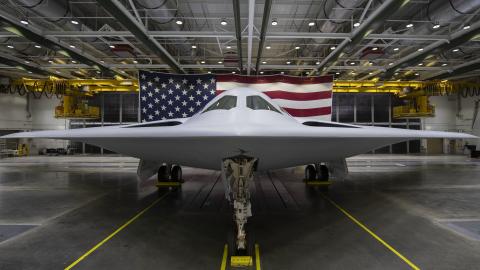This week’s news that Russia will suspend participation in the New START nuclear treaty follows the State Department’s January announcement that Russia is in breach of New START and its obligation to allow inspection activities on its territory. Since the Cold War, the United States has led efforts to promote nuclear non-proliferation and to create a transparent and stable dynamic between Moscow and Washington regarding our nuclear weapons forces. But the Russians have repeatedly demonstrated a willingness to violate the terms of our agreements.
While the United States has sought to decrease our reliance on nuclear weapons in our military strategies, Russia has gone the other way. Russia is developing, testing, and fielding new delivery systems within traditional categories like road-mobile and silo-based intercontinental ballistic missiles. But it has also developed novel systems like nuclear-capable hypersonic glide vehicles that raise questions about their intent. And its large arsenal of non-strategic nuclear weapons remains outside the bounds of any treaty.
As we’ve seen in Ukraine, Russia uses the threat of nuclear employment to coerce nations in wars of aggression that Russia has chosen. Moscow appears to have lowered the nuclear threshold. The best path for peace is for the United States to maintain credible deterrence options. This provides incentives for our adversaries to engage in diplomacy.
What to Do:
1. The United States should get to work on increasing the credibility of US extended deterrence in Europe as well as in Asia to raise the nuclear threshold. The Biden administration should immediately begin consulting with NATO allies regarding Russia’s abandonment of the treaty.
2. The Biden administration needs to respond forcefully and support an expedited fielding of a nuclear-tipped submarine-launched cruise missile. The Trump Nuclear Posture Review called for this to raise the nuclear threshold. Senior military leaders support the program, as does Congress. The Biden administration should cease its efforts to cancel the program and instead wholeheartedly support it.
3. The United States recently unveiled the next-generation B-21 stealth bomber. While the system is in the early stages of production, the US needs to adapt and acquire additional B-21 bombers. The US would also be wise to ensure there are ample nuclear and conventional weapons for the B-21 at the scale necessary to meet deterrence requirements.
4. The United States should also move with urgency to build 16 Columbia-class ballistic missile submarines instead of the 12 currently planned. This new class of SSBNs is designed to replace the 14 aging Navy Ohio-class SSBNs.
5. Given that Russia cannot be trusted to abide by treaty limits, the Air Force and Navy need to immediately begin the lengthy process of reversing the conversions made to our bombers, submarines, and ICBMs that restrict the number of deployed US warheads.
Dig Deeper:
How to Strengthen US Deterrence and Weaken the Attempts of Rival Nuclear Coercion, by Rebeccah L. Heinrichs
The Biden NPR: Embracing Foundations, Rejecting Improvements, by Rebeccah L. Heinrichs
Eleven Myths and Realities about Biden’s Missile Defense Review, by Rebeccah L. Heinrichs




















